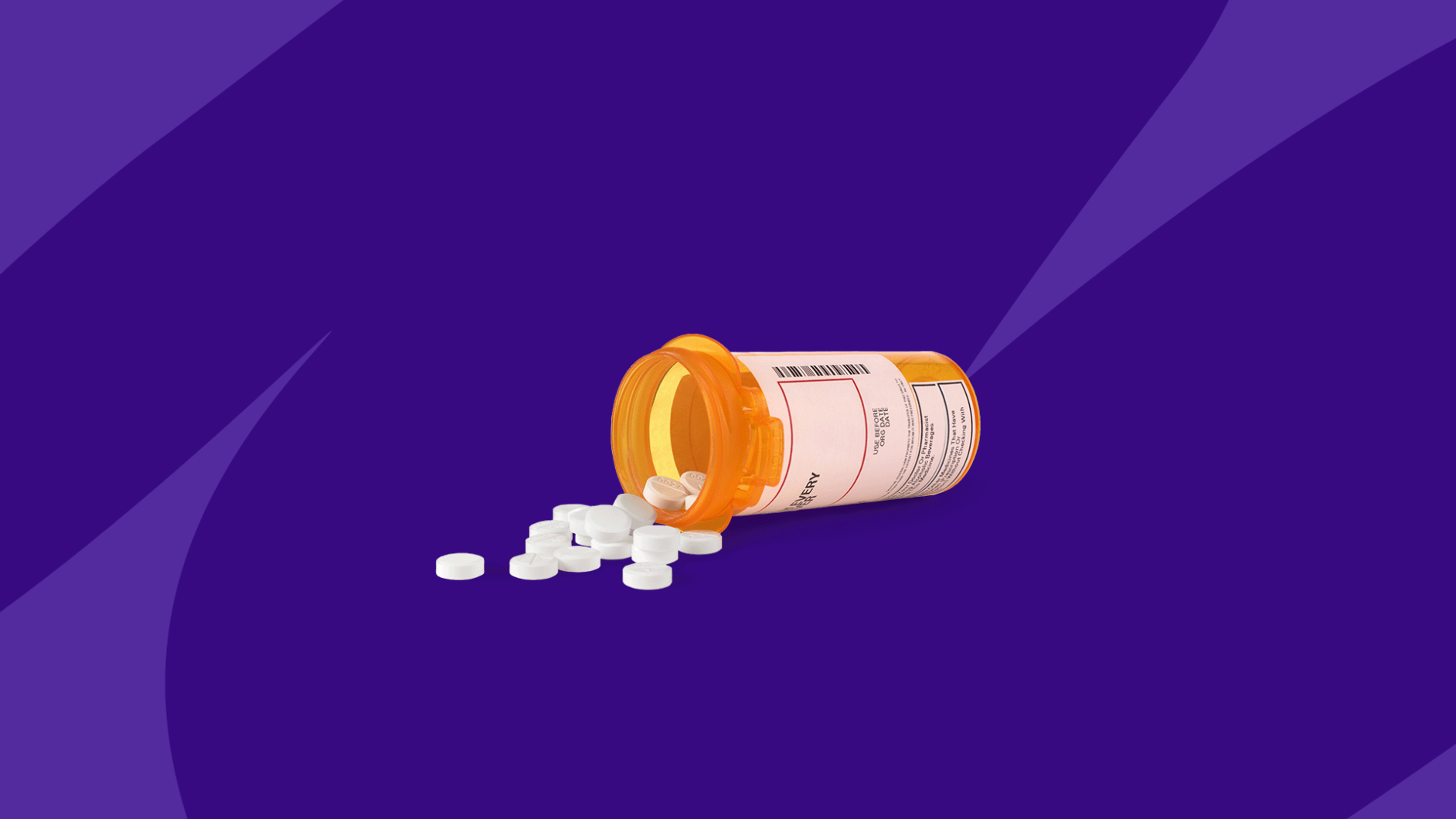Common acetazolamide side effects | Serious side effects | Tingling | Electrolyte disorder | Changes in hearing | Side effects timeline | Contraindications | Warnings | Interactions | How to avoid side effects | How to treat side effects
Acetazolamide is a generic prescription drug that is FDA-approved to treat glaucoma, edema due to heart failure, epilepsy, and altitude sickness. Healthcare professionals also use acetazolamide off-label to treat high pressure in the brain (intracranial hypertension), sleep apnea, Marfan syndrome, and periodic paralysis. It is also sometimes used to manage the side effects of high-dose methotrexate treatment.
Acetazolamide is a carbonic anhydrase inhibitor that causes the buildup of carbonic acid. This reduces the amount of water secreted into the eyes, lowering the pressure within the eye. This buildup also has a diuretic effect, increasing the elimination of sodium, potassium, and excess water. Taken as a tablet or administered as an injection, acetazolamide has some distinct side effects.
Common side effects of acetazolamide
The most commonly experienced side effects of acetazolamide are unwelcome skin sensations and changes in the way things taste. The most typical side effects of acetazolamide are:
- Numbness or tingling sensations
- Changes in taste (metallic or bitter taste in the mouth)
- Fatigue
- Nausea
- Vomiting
- Stomach pain
- Appetite loss
- Malaise
- Diarrhea
- Sticky or dark stools
- Frequent or excessive urination
- Sugar in the urine
- Blood in the urine
- Electrolyte imbalances
- Ringing in the ear
- Changes in hearing
- Blurred vision
- Drowsiness
- Confusion
- Dizziness
- Lightheadedness
- Increased or decreased blood sugar levels
- Liver abnormalities (increased levels of liver enzymes)
- Skin rash
- Hives
- Sensitivity to sunlight
Injection site pain is a common side effect of acetazolamide injections.
Serious side effects of acetazolamide
The most serious side effects of acetazolamide include:
- Acidic blood (metabolic acidosis)
- Electrolyte imbalances, including low blood potassium and low sodium
- Liver impairment
- Liver failure
- Crystal formation in the urine
- Kidney stones
- Blood disorders
- Seizures
- Muscle paralysis
- Depression
- Growth inhibition in children
- Severe drug or allergic reactions (including rash, swelling, or trouble breathing)
Tingling
In about 50% of patients, acetazolamide can cause abnormal skin sensations, including tingling, “pins and needles”, burning, and numbness—usually in the fingers, toes, or around the mouth. These and some other side effects of acetazolamide, like taste perversion, are due to nerves functioning incorrectly due to electrolyte changes. For the most part, tingling and other skin sensations are temporary and not a health threat. They may be dose-dependent and, therefore, could be reversible by reducing the dose. If tingling, burning, or numbness is significantly interfering with daily functioning, ask the prescriber for medical advice.
Electrolyte disorder
As a diuretic, acetazolamide commonly causes electrolyte disorders. The most common are low sodium (hyponatremia), low potassium (hypokalemia), and high chloride (hyperchloremia) in the blood. All are potentially serious and even life-threatening conditions. These adverse effects can only be verified with a blood test, but they can be spotted by their symptoms. People taking acetazolamide should be familiar with the symptoms of all three of these disorders and immediately contact a healthcare professional when symptoms are present.
Hearing changes
Acetazolamide can cause hearing loss with about one in 15 users reporting tinnitus. Acetazolamide is considered toxic to the inner ear. The damage is usually reversible if the medication is discontinued shortly after symptoms appear. Any hearing changes should be immediately reported to the prescribing healthcare provider.
How soon do acetazolamide side effects start?
Many of the most common side effects of acetazolamide can happen early in treatment. These include digestive system complaints, dizziness, drowsiness, and increased urination. Electrolyte imbalance and nervous system abnormalities, such as strange skin sensations, taste changes, hearing changes, muscle paralysis, and depression, are typically delayed effects. Serious side effects of acetazolamide, including liver damage, kidney damage, and severe drug reactions, are also delayed effects. However, allergic reactions could happen rapidly at the very start of treatment.
How long do acetazolamide side effects last?
Some common side effects, such as nausea, vomiting, diarrhea, and other digestive system problems, may get better over time. Some mild side effects and most serious side effects may need medical intervention or, in some cases, may improve only after discontinuing the drug. When the drug is stopped, the side effects should improve in about one to two days. However, some serious side effects may have long-term consequences, including kidney damage and liver damage.
What are the long-term side effects of acetazolamide?
Acetazolamide can be taken for a long time, but certain side effects may get worse the longer the drug is taken. These include tinnitus, taste perversion, skin sensations, and other nerve effects. Both liver and kidney damage can worsen the longer the drug is taken. That’s why it’s very important to tell the prescriber about side effects. Long-term use of acetazolamide in children can cause growth suppression.
Acetazolamide contraindications
Acetazolamide is never given to people with low sodium or low potassium. These include:
- Uncorrected low sodium
- Uncorrected low potassium
- Hyperchloremic acidosis (acidity of the blood caused by too much chloride)
- Adrenal gland dysfunction
- Severe liver disease
- Kidney dysfunction
Because of the risk of nervous system disorders due to the buildup of unprocessed toxins, acetazolamide is never prescribed to people with cirrhosis of the liver.
Acetazolamide is also contraindicated as a long-term treatment for narrow-angle glaucoma.
Finally, acetazolamide is never prescribed to people who are allergic to it.
Pregnancy
Acetazolamide can cause birth defects in animals. There are rare cases of acetazolamide causing problems in human fetuses. Therefore, acetazolamide should only be used in pregnant women when the benefits outweigh the risks.
Breastfeeding
Acetazolamide is present in breast milk. Although the effects of acetazolamide on a nursing infant have not been studied, a healthcare provider may ask the nursing mother to discontinue acetazolamide treatment or discontinue breastfeeding. If acetazolamide is taken while breastfeeding, immediately tell the prescriber if the infant shows any adverse effects.
Children
Acetazolamide is FDA-approved to treat children 12 years of age and older. Prolonged acetazolamide treatment can suppress growth in children. Healthcare professionals are encouraged to regularly monitor growth, blood acid levels, and electrolytes when treating children with acetazolamide.
Seniors
Because of declining liver and kidney function, acetazolamide is used cautiously in people older than 65 years of age. Lower doses may be required for this age group.
Acetazolamide warnings
Because of possible electrolyte imbalances and metabolic acidosis, acetazolamide has several warnings and precautions.
Cautions
Some pre-existing medical conditions can make acetazolamide treatment riskier. These include:
- Kidney dysfunction: Mild to moderate kidney problems increase the risk for electrolyte imbalances when taking acetazolamide. Dosage reductions may be needed.
- Liver impairment: Mild to moderate liver problems also increase the risk of electrolyte imbalances.
- Diabetes: Acetazolamide can alter blood sugar levels, so glucose control is harder to achieve. People with diabetes are also more likely to have electrolyte disturbances when taking acetazolamide.
- Lung problems: People with breathing difficulty due to obstructive lung problems, such as emphysema, bronchitis, asthma, or lung infections, are at a greater risk of developing acidic blood (metabolic acidosis) when taking acetazolamide.
- Drug allergies: Acetazolamide is generally avoided in people who have had allergic reactions to other carbonic anhydrase inhibitors. People with sulfa drug (sulfonamide) allergies are at risk of severe allergic or skin reactions when taking acetazolamide.
Abuse and dependence
Drug abuse, physical dependence, and withdrawal are not associated with acetazolamide.
Overdose
Call a poison control center or get emergency medical treatment if an overdose of acetazolamide is expected. The maximum FDA-approved daily dose is 1,000 mg (one gram), but healthcare professionals may prescribe up to four grams per day off-label. That doesn’t mean that taking four grams a day is a good idea. Always consider the prescribed daily dose to be the maximum daily dose.
Acetazolamide interactions
Acetazolamide has several potentially risky drug interactions. Some are so hazardous that acetazolamide is never used with certain drugs. These include the antidepressant Wellbutrin (bupropion) and the GERD medication metoclopramide.
Other drugs are allowed, but generally are avoided, in combination with acetazolamide because of the hazards. These include:
- High doses of salicylates like aspirin
- Other carbonic anhydrase inhibitors
- Sodium bicarbonate
Other drugs might have worse side effects when combined with acetazolamide. These include:
- Amphetamines
- Drugs that interfere with folic acid, such as carbamazepine, phenytoin, primidone, trimethoprim, and phenobarbital
- Some heart rhythm medications, such as quinidine
- The immunosuppressant cyclosporine
- Decongestants, such as ephedrine and pseudoephedrine
Acetazolamide can reduce the effectiveness of some drugs, such as:
Many different types of drugs can lead to electrolyte problems, including diuretics, corticosteroids, some antibiotics, some antipsychotic medications, cardiac glycosides (like digoxin), blood pressure drugs, and some cancer drugs. These aren’t considered very risky drug interactions, but a healthcare professional may monitor electrolytes more closely when they’re combined with acetazolamide.
How to avoid acetazolamide side effects
Side effects are sometimes unavoidable, but they can be minimized. It’s also possible to prevent some of the serious side effects of acetazolamide.
1. Tell the prescriber about all current medical conditions
Avoiding side effects in general and bad side effects in particular starts with making sure the prescribing healthcare provider knows about all existing medical conditions, particularly:
- Liver problems
- Kidney disease
- Electrolyte abnormalities, particularly low sodium, low potassium, or high levels of chlorine in the blood
- Acidic blood
- Reduced adrenal gland function
- Obstructive lung diseases, such as COPD, asthma, or lung infections
- Diabetes
- Angle-closure glaucoma
- Drug allergies
- Pregnancy or plans to get pregnant
- Breastfeeding or plans to breastfeed
2. Tell the prescriber about all drugs being taken
Drug interactions are another source of possible side effects, so tell the prescriber about all prescription drugs, over-the-counter medications, and dietary supplements being taken, especially high-dose aspirin.
3. Understand the dosing schedule
Follow the prescriber’s directions, particularly the dosing schedule. For open-angle glaucoma, doses will usually be split into two daily doses, one in the morning and one in the evening. Doses for epilepsy could be taken two to four times daily. If acetazolamide is taken for heart failure, doses could be taken once per day or once every other day. For mountain sickness, don’t start taking acetazolamide until the day before changing to a high altitude. Only take it for two to three days or until descending to a lower altitude.
4. Don’t take extra medicine
Don’t increase the dose unless instructed by the prescriber. Don’t double the dose to make up for a missed dose. If a dose is missed, take it when remembered. If it’s almost time for the next dose, skip the missed dose and take the next scheduled dose.
5. Take the dose with food
To avoid problems like nausea, vomiting, or abdominal pain, try taking each dose with a meal or snack.
How to treat side effects of acetazolamide
Some side effects can be easily managed at home, but a few will need medical intervention.
Nausea and vomiting
Drink fluids to keep from dehydrating. Ask the prescriber if it’s okay to take an over-the-counter antihistamine. If nausea or vomiting is severe or prolonged, contact the prescriber.
Paresthesia
Always tell the prescriber about numbness, tingling, burning, or “pins and needles” feelings experienced while taking acetazolamide.
Hearing changes
Contact the prescriber if hearing changes in any way while taking acetazolamide.
Seizures
Get emergency medical treatment if seizures happen while taking this medicine.
Low sodium
Immediately contact the prescriber at any sign of low sodium: weakness, headache, confusion, or coordination problems. Emergency medical help is needed if sodium is low enough to cause seizures or coma.
Low potassium
Like low sodium, once potassium is low enough to cause symptoms, medical attention is needed. Call the prescriber or visit an emergency room if these symptoms occur:
- Heart palpitations
- Constipation
- Tiredness
- Muscle weakness
- Muscle cramps
- Muscle twitches
- Tingling or numbness
- Extreme weakness
- Paralysis
High levels of chlorine in the blood
Too much chlorine will make the blood acidic. This is a serious medical condition called metabolic acidosis and requires immediate medical attention. The signs of metabolic acidosis are:
- Irregular heartbeats
- Vomiting
- Confusion
- Low energy
Liver problems
If acetazolamide starts hurting the liver, medical help is needed. Contact the prescriber if symptoms of liver damage are noticed:
- Upper abdominal pain
- Nausea
- Tiredness
- Loss of appetite
- Dark urine
- Pale stools
- Jaundice (yellowing of the skin or eyes)
Allergic reactions
Stop taking the drug and get medical attention at any sign of an allergic reaction, including skin rash, shortness of breath, or swelling of the face, mouth, or throat.
Skin reactions
Skin reactions to acetazolamide can be severe and even life-threatening. Stop taking the drug and get immediate medical attention if any of the following symptoms are experienced:
- Skin rash
- Skin blisters
- Skin peeling
- Skin pain
- Fever
- Sores in the mouth
- Burning in the eyes
Sources
- Acetazolamide, Epocrates
- Acetazolamide, StatPearls
- Acetazolamide drug summary, Prescriber’s Digital Reference
- Acetazolamide injection prescribing information, U.S. National Library of Medicine
- Diamox side effects, University of Iowa Health Care
- Drug-induced paresthesia, VisualDx
- Side effects of acetazolamide: a systematic review and meta-analysis assessing overall risk and dose dependence, BMJ Open Respiratory Research











